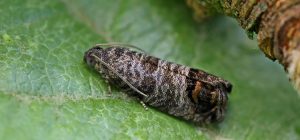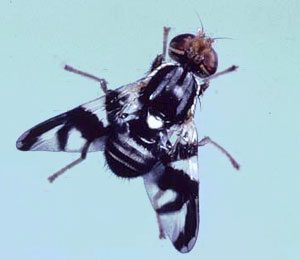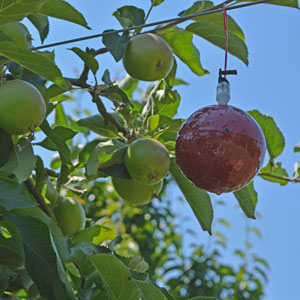 Hopefully many of you have played with the codling moth tracking tool we have posted about in the past, and are tracking a weather station near you, in hopes of controlling codling moth and apple maggot this summer. Watching the weather has been tricky this year, with temperatures fluctuating between warm and cool.
Hopefully many of you have played with the codling moth tracking tool we have posted about in the past, and are tracking a weather station near you, in hopes of controlling codling moth and apple maggot this summer. Watching the weather has been tricky this year, with temperatures fluctuating between warm and cool.
As we move from spring to early summer, we are close to the target accumulation of heat. Ideally, a spray should go on at 525 DD to control codling moth. For the Bellingham Airport, that target will be reached around June 20. With the current forecast, you might want to spray a couple days before that- spraying in the rain is not a great idea. Farther out in the county where it’s a little warmer, the target DDs will be reached earlier, maybe a few days earlier. Remember, if you are using an insecticide to control this pest, spray when bees are not active!
Takeaway, if you are planning on controlling codling moth by spraying this year, be ready!

Apple Maggot fly
As for apple maggot, models are showing first emergence of flies late June. If you are using maggot barriers to protect your fruit, you should get those on now. If you plan to use sticky maggot traps to monitor for flies, hang them soon- they should be up by June 21- right now the models show 1st adult flies could show up by the 24th. For those who have low apple maggot pressure, hanging 3 traps in the top of each tree is often enough to trap most of the flies. For larger orchards, use the traps as a monitoring tool, and spray when you catch 3 adult flies.

Apple Maggot Trap


thank you for sending this information
What do you mean by 525DD? What insecticide would you recommend?
If you look at the tracking tool, the model tracks Degree Days, accumulated heat units. Codling moth reach the peak of egg laying when 525 degree days (DD) have accumulated. In my home orchard, I use an organic spray with spinosad as the active ingredient. Here at the farm, we rotate a synthetic form of that spray with another insecticide (I would have to check with the orchard manager to find out what that is). If you get the first spray on at the right time, you usually don’t have to spray a second time.